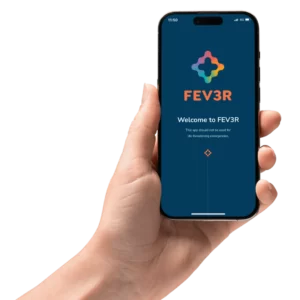-
Why Klinik Panel Habits Are Holding Your Team Back
-
The Comfort of Habit: Why Employees Stay Loyal to Klinik Panels
-
FEV3R Is Powerful—But Only If Your Team Knows How to Use It
-
5 Reasons Employees Aren’t Using Your Digital Clinic (Yet)
-
How to Drive Adoption: What Works with FEV3R
-
The Long-Term Benefit: Building a Preventive Culture
-
Final Thoughts: Klinik Panel or Digital First?

You’ve invested in a modern, flexible digital healthcare solution like FEV3R. Your team now has access to 24/7 online doctors, home medication delivery, mental health support—the works. And yet… your clinic bills haven’t gone down. Employees are still walking into their old klinik panel.
Why?
It’s not that they don’t like digital options—it’s that clinic usage behavior runs deep, and changing habits takes more than just rolling out a new app.
This article breaks down why employees may be slow to adopt digital healthcare and how HR teams can encourage smarter, faster uptake with tools like FEV3R. If you’re wondering why your staff still prefer walking into the clinic when a GP is one tap away, read on.
The Comfort of Habit: Why Employees Stay Loyal to Klinik Panels
When someone’s not feeling well, they usually reach for what’s familiar. For many Malaysians, that’s a quick trip to the nearest klinik panel—a routine that’s been reinforced for years.
This clinic loyalty habit is hard to shake for a few reasons:
- They know the clinic’s location and staff
- They assume physical care is more “legit”
- They’re unaware of what digital platforms like FEV3R can actually offer
- They don’t feel confident using new technology for health
Even when digital tools are more convenient, this ingrained habit can cause people to delay switching—unless they’re actively guided through the transition.
FEV3R Is Powerful—But Only If Your Team Knows How to Use It
Just because a platform is available, doesn’t mean it’s adopted. Companies often overlook the importance of employee app training and structured onboarding.
To change healthcare digital adoption outcomes, employees need to feel confident in using digital health services. They need to trust that it works—and more importantly, that it works for them.
That’s why FEV3R offers custom telehealth onboarding in Malaysia designed to guide employees step-by-step. It’s not just about installing an app—it’s about changing how your team thinks about healthcare access.
5 Reasons Employees Aren’t Using Your Digital Clinic (Yet)
If you’ve launched FEV3R and are still seeing high klinik panel usage, here’s what might be going on:
- They don’t know what the app actually does.
A lot of employees assume it’s just “another consultation app” and don’t realise it includes prescriptions, referrals, medical letters, follow-ups, and mental health support. - They had a poor first experience.
If someone tried it once but had a laggy call or misunderstood the process, they might avoid trying again. First impressions matter. - They’re unclear when to use digital vs physical clinics.
Many don’t realise that digital GPs can help with common issues like coughs, fevers, skin conditions, or even chronic disease management. - They fear it won’t be “official” enough for medical leave.
Some employees still think that MCs or consultation letters from telehealth aren’t accepted—especially if their supervisors haven’t clarified otherwise.
They just haven’t had the nudge.
Without reminders, incentives, or internal awareness, adoption lags—because there’s no urgency to change old habits.

How to Drive Adoption: What Works with FEV3R
Encouraging healthcare digital adoption doesn’t need to be complicated—but it does need to be intentional. Here’s how to increase usage of FEV3R and reduce reliance on traditional klinik panel visits:
1. Lead with a Guided Demo
Hold a short lunchtime webinar or HR-led session showing how FEV3R works—from booking a consult to receiving an MC. Make it real, not theoretical.
2. Appoint Digital Health Champions
Empower a few team leads or department reps to test FEV3R and talk about their experience. Peer recommendations go a long way.
3. Align Supervisors on Acceptance
Make it clear that medical leave from digital consultations is valid and will be accepted. The message must come from leadership to be trusted.
4. Share Use Case Scenarios
Help employees identify when to use FEV3R: late-night fevers, follow-up consults, mental health check-ins, or even travel-related advice. Context is key.
5. Set KPIs Around Usage
Encourage HR to track adoption rates and send monthly usage updates. If you’re using FEV3R’s corporate dashboard, this is already available.
The Long-Term Benefit: Building a Preventive Culture
Encouraging digital healthcare isn’t just about reducing clinic visits—it’s about shifting to preventive care. When employees use FEV3R regularly, they catch symptoms earlier, manage chronic issues better, and take less time off work.
The real win? You build a culture of wellness. Not just treatment.
And when the next HR healthcare review rolls around, you’ll have the usage data to prove it.
Final Thoughts: Klinik Panel or Digital First?
It’s not that clinic usage behavior is wrong—it’s just outdated for the modern workforce. Employees need care that’s fast, flexible, and familiar. Digital health tools like FEV3R provide exactly that.
But the shift doesn’t happen automatically. To break the clinic loyalty habit, HR teams need to invest in proper employee app training and structured telehealth onboarding in Malaysia. The good news? Once your team experiences the convenience, there’s no going back.
So before you wonder why no one’s using the app—ask if you’ve truly helped them understand it.
Let FEV3R do what it does best. And help your employees move from queueing outside clinics… to care at their fingertips.
Contact Us






